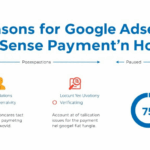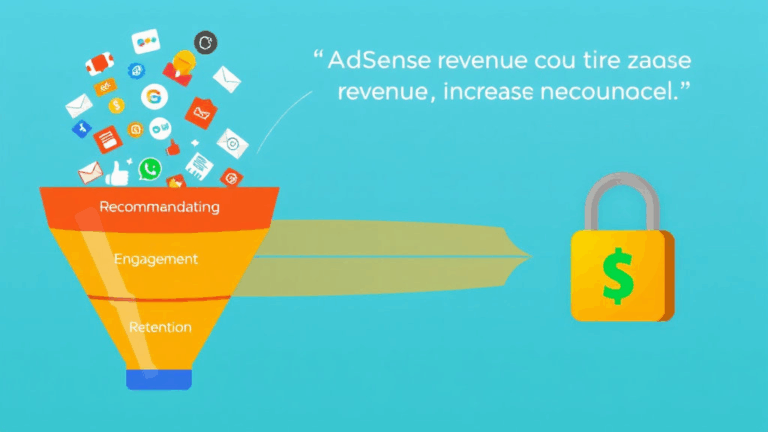What No One Tells You About Tax Tools for Online Businesses
QuickBooks Self-Employed Isn’t Great If You Run Multiple Sites
I really wanted to like QuickBooks Self-Employed. It should’ve been perfect. It even auto-categorized my hosting expenses as business, and mileage tracking was actually solid. But if you’re juggling income from five different AdSense accounts, two Substack lists, and the occasional Zelle payment from that one legacy freelance client (you know the one)—it’s not anywhere close to enough.
The issue is it treats all 1099-ish income the same. You can’t assign income sources to specific properties unless you flatten your income into broad categories manually—which defeats the whole damn point of automation. I ended up back in Google Sheets, color-coding revenue from each domain like it’s 2009.
Real moment: I got an IRS letter last year about what basically amounted to AdSense short-reporting. Turned out I’d forgotten I was using AdSense via two entirely separate Google logins, and QuickBooks mashed the deposits into one vendor profile. Peace out, audit season.
FreshBooks Is Weirdly Obsessed with Invoicing
FreshBooks looks clean, and if you’re a solo consultant who sends recurring invoices and wants clean client summaries, it’s great. But as a tax tool for online revenue, especially indirect sources like affiliate links or programmatic ads, it doesn’t really translate. There’s no built-in payment import for third-party networks, and reconciling cross-platform income—like Shopify + YouTube + Gumroad—gets real tedious, real fast.
I also ran into a bug where PayPal business imports would double if a reversal happened mid-month. Refunds would cause both the original and refund entries to repopulate outside their original transaction batch. FreshBooks support blamed PayPal; PayPal blamed the QuickBooks CSV I imported for other stuff. Classic snakes-eating-each-other ecosystem dysfunction.
Aha moment: If you delete a duplicate refund transaction in FreshBooks, it also deletes the original payment if they share the same Memo field. That logic is nowhere in the docs.
Wave Accounting Is Kind of the Hidden MVP (With Caveats)
Honestly, if you’re semi-comfortable reading through category reports and aren’t allergic to budget UIs, Wave has an outsize amount of power for its free tier. It handles Stripe and PayPal cleanly, and the transaction editor is more sane than QuickBooks in some ways (you can tag transactions across categories without changing their fundamental classification, which shouldn’t be revolutionary, but here we are).
Undocumented Edge Case Alert
If you connect multiple Stripe accounts for different product brands, Wave will truncate the account descriptors after 20 characters. So if you name both accounts “Stripe – Brand-A” and “Stripe – Brand-B,” they’ll both show up as just “Stripe – Brand-” in your reports. It’s genuinely absurd and took me 45 minutes to figure out why the math was off on quarterly income.
- Tag all Stripe sources with custom transaction labels immediately
- Export monthly as CSV before edits, Wave autosaves unpredictably
- Turn off Auto-Categorization first thing
- Never rely on the business performance dashboard—it’s always off by a few hundred
- Cash basis vs accrual is buried in Reports, not Settings
Lacerte and TaxAct Are Useless for Digital Businesses
Lacerte is slick at first—direct IRS integration, nice printable reports—but it’s pure overkill unless you’re filing W-2s for full-time employees. It’ll choke the second it sees anything that isn’t W-2 or straightforward 1099-MISC. If you, say, earned money through Patreon or Gumroad, you’ll get thrown into data entry purgatory.
TaxAct is somehow worse with digital income. Try entering a crypto wallet gain and an Etsy bundle sale on the same return. Halfway through, it just title-cased my expense categories into absurd labels like “Tech Services Purchased” and “Other EMarkets Edits.” Literal nonsense. Good luck explaining that during an audit.
I had a client once who couldn’t file because TaxAct flagged their Etsy fees as a “Personal Expense.” They had to manually edit Schedule C line 27a with override flags. That’s not acceptable if you’re trying to file late at night on April 14.
Real-World Revenue Structures Tax Tools Don’t Expect
Here’s the thing: most tax software treats business revenue as client payments for services or product sales. That’s it. But online businesses make money like this:
- AdSense across three sites, in two currencies
- Stripe payments for eBooks
- Amazon KDP royalties
- Affiliate commissions that don’t always send 1099s
- Ko-fi donations marked as “tips” but taxable anyways
There’s no tax prep tool that handles all that cleanly. You’ll end up juggling CSV exports from seven platforms, trying to remember if “DEPOSITS FROM ADT” is some ad affiliate or that weird sponsorship you did on Mastodon. I now keep a Notion table just to annotate transaction IDs.
Behavioral Bug in Linking Income to Line Items
Several tools (including TaxSlayer and FreeTaxUSA) will try to smart-match descriptions to revenue categories. They’ll see “Amazon” and assume retail. I once had KDP royalties lumped into “Cost of Goods Sold.” If you don’t manually override it, that screws your gross receipts number and trips review flags for mismatched Schedule C totals. It’s the kind of nonsense that doesn’t surface until you’re adjusting estimated payments and wondering why your usual quarterlies are short.
Browser Extensions That Mess With Tax Platforms
I had this one Chrome extension—an accessibility plugin that adds contrast filters—that completely broke the dropdowns in H&R Block’s online tax tool. Dropdowns would trigger but not register changes, and the Return button silently failed. I thought the site was broken, cleared cache, reinstalled Chrome—nothing. Turns out it was just the extension injecting CSS styles that overrode z-index priorities. Beautiful chaos.
You’ll also want to disable Grammarly and anything that tries to “beautify” forms. These tools work on JSON-backed webapps with aggressive frontend validation, and any DOM rewrite can cause invisible field drift. My favorite was when Grammarly turned “$4400.00” into “$4,400.00” and the tax field rejected it silently but didn’t show an error. Just wouldn’t proceed.
Pro tip: do your taxes in incognito mode with all extensions disabled. It’s boring, but it avoids some truly stupid silent failures.
The Best Workflow I’ve Landed On (So Far)
After all the fiddling with premium platforms, the stack that’s worked for me the last two years is this:
- Google Sheets for tagging and reconciling ALL income manually
- Wave for monthly categorization and bank feed sanity checks
- TurboTax Self-Employed purely for filing, nothing else
No tool fully supports tiered royalty breakdowns (like Audible + ACX vs. Amazon.co.jp), platform fee logic (Ko-fi takes nothing, Stripe takes three layers), and varying tax treatments on tips vs. product income. So I do the math myself, then use filing tools as a formality. This avoids every single auto-categorization misfire and lets me pre-verify all Schedule C inputs in something that doesn’t collapse when Stripe changes payout timing.
“Your AdSense 1099 will not align with your deposit history if you were paid across multiple country accounts,” Google support once said. Not documented anywhere, obviously.














